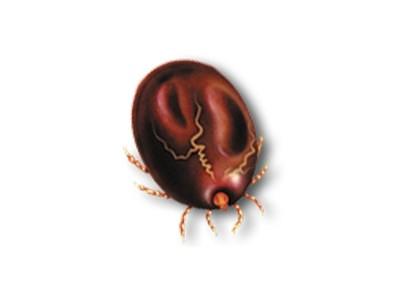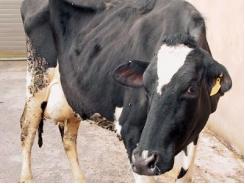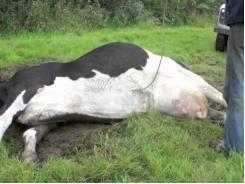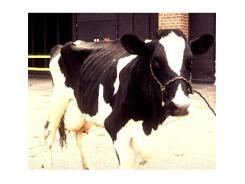Cow Health: Theileriosis

Theileriosis is a disease caused by a species of Theileria a blood-borne parasite that only affects cattle and is primarily transmitted by ticks.
The disease is widespread over the northern half of the North Island with cases diagnosed as far south as Taranaki, the King Country, Whanganui and Hawkes Bay.
Cases of Theileriosis have also been confirmed in parts of the South Island - Canterbury, West Coast and Marlborough. More cases are likely, especially in Nelson/Marlborough as ticks are present in the north of the South Island.
Theileriosis could be affecting your cows if you farm in tick-infected areas, or if your cattle have been shifted into or out of tick-infected areas.
- Theileriosis only affects cattle and is transmitted by cattle ticks
- Theileriosis causes anaemia in cattle and can sometimes be fatal
- Cows during calving and young calves (2-3 months) are at most risk from infection
- There are no human health or food safety risks associated with Theileriosis.
The best way of minimising the impact of Theileriosis is by good stock management and by reducing stress as much as possible. Applying a tick control product during high risk periods can assist.
If you suspect a case of Theileriosis, contact your veterinarian for advice.
What to look out for
The signs of Theileriosis are those associated with anaemia and include…
- pale or yellow, rather than healthy pink, vulva (open up the vulva and look at the colouring inside). See Field Anaemia Nearest Indicator (F.A.N.I) card.
- whites of eyes yellow (a sign of jaundice)
- lethargy - exercise intolerance, cows lagging on the walk to the shed
- sick cows not responding as expected to treatment for conditions such as milk fever
- cows are off their food and appear hollow sided
- a decrease in milk production
- sudden death especially in late pregnancy or early lactation.
The signs of anaemia associated with Theileriosis are more likely to be seen around calving time, in calves (2-3 months), if cows are coping with other health challenges, or potentially at mating time.
The diagnosis of Theileriosis is based on combination of visible signs of anaemia and tests carried out on blood samples.
Treatment
The treatment options are mainly limited to symptomatic and supportive care...
- Keep cattle in good condition and well fed so they are better able to cope with disease challenges and stressful events
- Minimise stress and movement of animals showing signs of infection
- Give affected animals easy to eat, high quality feed and plenty of water
- Blood transfusions are an option for valuable, severely anaemic animals
A drug treatment is available.
- There are long withholding periods and special use conditions
- Bobby calves must not be fed milk from treated cows during the withholding period
- Your vet can advise on the use the drug and whether it is right for your cows.
If you suspect Theileriosis in your herd, contact your vet to do a blood test so that an appropriate treatment programme can be devised and a plan developed to manage the disease in your herd.
For more information see
- Fact sheet #3: Detection and treatment
- Fact sheet #4: Managing Theileria infection
Controlling the spread
Cattle are at risk of infection when moved to areas where infected ticks are present. Likewise, if an infected animal is transported, it can spread infection to ticks in the new location, in turn spreading disease to uninfected animals...
Biosecurity precautions are a farmer's best defence against Theileriosis.
- Check the health of animals before they are purchased
- New arrivals and returning stock should be quarantined for at least 7 days, checked for ticks and treated as necessary
- Ensure stock leaving the farm are healthy and not infested with ticks.
Observe cattle for signs of Theileriosis during high risk periods
- Calving, young calves (2-3 months), new arrivals, returning stock
- During periods when ticks are active, mid-August to mid-March.
Strategic tick control
- Apply a tick control product during spring and autumn – follow your vet’s advice
- Graze susceptible paddocks with other non-bovine species.
For more information see
- Fact sheet #2: Understanding the risk of Theileria infection
- Fact sheet #4: Managing Theileria infection
- Fact sheet #5: Ticks and Theileria
- Seasonal Theileriosis management
For more information:
- Short guide to Theileria - A guide for farmers working with their veterinarian in managing Theileria
- Seasonal Theileriosis management
- F.A.N.I card
- Theileria and anaemia in cattle - Fact Sheet #1 - The facts for farmers
- Theileria and anaemia in cattle - Fact Sheet #2 - Understanding the risk
- Theileria and anaemia in cattle - Fact Sheet #3 - Detection and treatment
- Theileria and anaemia in cattle - Fact Sheet #4 - Managing Theileria infection
- Theileria and anaemia in cattle - Fact Sheet #5 - Ticks and Theileria
Media
- Theileriosis a calving risk (Inside Dairy September 2014)
- Farmers urged to watch out for Theileriosis (Media release, 16 April 2014)
- Theileria outbreak at Limestone Downs (RadioNZ, 11 April 2014)
- Theileria video (Campbell Live, 23 September 2013)
- Farmers warned about Theileria in cows (Media release, 10 September 2013)
Advisories
- DairyNZ advisory to farmers
- DairyNZ Advisory to Northland farmers (21 December 2012)
Links
- Ministry for Primary Industries - Theileria and anaemia in cattle
- New Zealand Veterinary Association
Related news
Tools

Phối trộn thức ăn chăn nuôi

Pha dung dịch thủy canh

Định mức cho tôm ăn

Phối trộn phân bón NPK

Xác định tỷ lệ tôm sống

Chuyển đổi đơn vị phân bón

Xác định công suất sục khí

Chuyển đổi đơn vị tôm

Tính diện tích nhà kính

Tính thể tích ao




 Cow Health: Heat stress
Cow Health: Heat stress  Cow Health: Johne's Disease in cow
Cow Health: Johne's Disease in cow